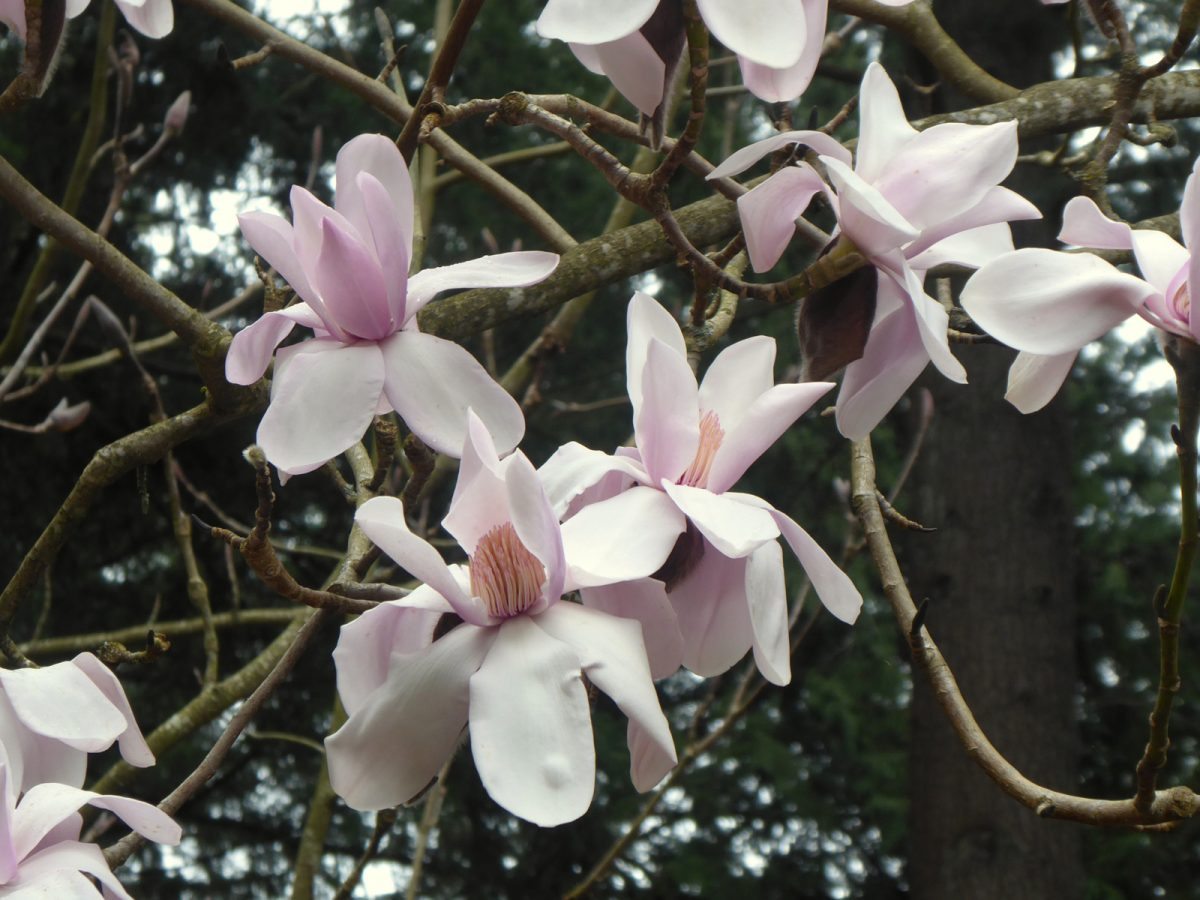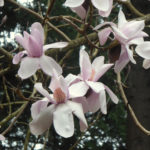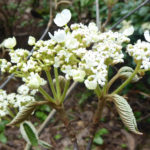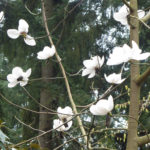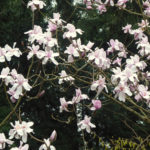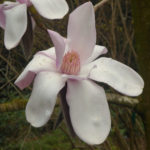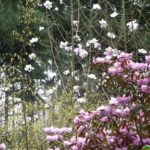A project I started well over 20 years ago has come into fabulous floral fruition this spring with the Magnolia Grove here at the RSBG in glorious full bloom for the first time. A combination of several factors has led to this grand display including, most importantly, the necessary length of time having passed that is needed for these slow-growing species of Magnolia to mature. In addition, we have not had a late hard frost which would have destroyed the delicate flowers and even the swelling buds of these early bloomers.
The Magnolia Grove began as a simple idea that I had in the late 1990s of adding more species magnolias to the garden. I really love species magnolias and wanted more in the garden, which was sorely lacking these aristocratic beauties at the time. The other reasons include the primary criteria for why anything gets planted in the RSBG – does it occur naturally with rhododendrons in the wild; does it like the same (or at least similar) cultural conditions as rhododendrons (these two pretty much go hand in hand the vast majority of the time); does it add to the display and overall appearance of the garden. Magnolias, along with camellias, maples, other Ericaceae, etc. fit these requirements perfectly.
Fortunately, one of the finest collections of species magnolias in North America occurs in the Asian Garden at the University of British Columbia Botanical Garden just north of us in Vancouver. With the permission of Peter Wharton, then Curator of the Asian Garden, I was allowed to collect scion wood of many of the more desirable species in their collection, including those of wild origin and spectacular named selections from some of the famous British estate gardens in Cornwall and other parts of the United Kingdom. Among these were species such as sprengeri, dawsoniana, sargentiana var. robusta and the queen of them all, the mighty campbellii including var. mollicomata. These are all large deciduous trees that flower quite early in the spring, well before the leaves emerge. They are mostly white to pale or deeper pink and quite spectacular when in full blossom. An interesting side note: the majority of the Magnolia collection at UBCBG was the result of Peter’s collection of scions from the documented and original specimens in the estate gardens of the United Kingdom many years prior.
My scions were shipped to Oregon for grafting by Lucile Whitman at Whitman Farms nursery. Lucile did a fantastic job and I received a call about two years later and was told I could come and pick up my magnolias. I ended up with even more than I could use in the garden and so I sent a copy of each clone to Peter Cox at Glendoick Gardens in Scotland to plant out in that fabulous garden. At the RSBG, a copy of each clone was planted out into the garden in a new bed that had been developed in an area that had contained the old mucky rotten sawdust and where all the old plantings had died. This large area was right along the road in a prime location and was full of weeds and salmon berry – a real blight. To fill this area and create a suitable space for planting, I used the soil removed during the excavation for the new propagation greenhouse in 2004. As the soil was excavated I had it dumped in the swampy area, which ultimately created a very large raised bed. Once we had sculpted the new bed and put in drainage, we rototilled our usual coarse sand mix into the top layer of the excavated soil, which was mostly clay. We now had a fantastic new location in full sun in which to plant out the new members of our Magnolia collection, which by this time had grown into landscape-size specimens in the nursery.
In addition, I focused the remaining plantings on rhododendrons and companion plants that would bloom at the same time as the magnolias, usually in March. These plants were limited to those with either pink, white or yellow flowers. No reds and no blue/purple which would be distracting and clash with the softer blend of colors. Rhododendron species such as denudatum, latoucheae, coeloneuron, lutescens and ciliatum are dominant along with companion plants such as Corylopsis sinensis from China and the stunning Viburnum furcatum from Japan. All these plants are of course of wild origin. Beneath the overstory magnolias and shrubby companion plants and rhododendron are sweeps of naturalizing Tenby Daffodil (Narcissus obvallaris) and our native Erythronium revolutum. It really is quite gorgeous in full bloom and I hope you have the chance to see it in March of 2021 when it should be even more spectacular than it is this year.
Be safe and we hope to see or hear from you soon.
Steve
Questions or comments? Email Steve directly at Steve@RhodyGarden.org

